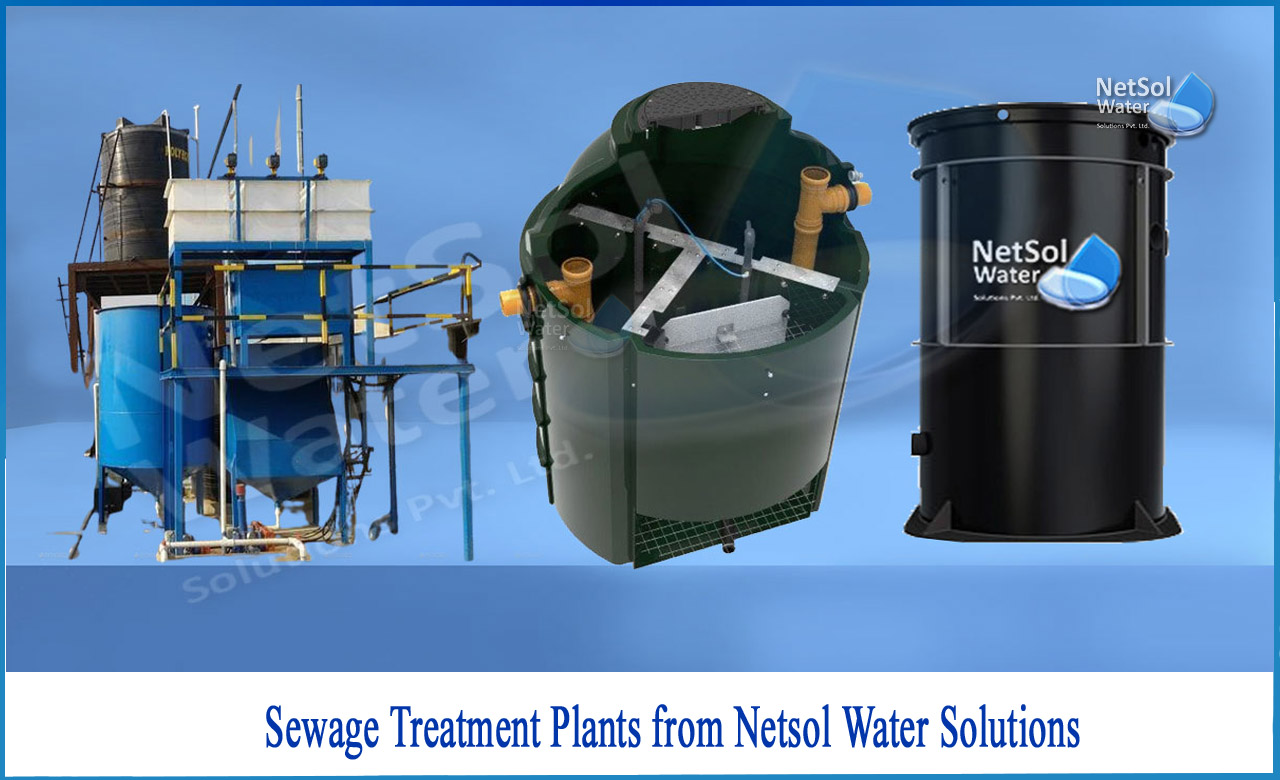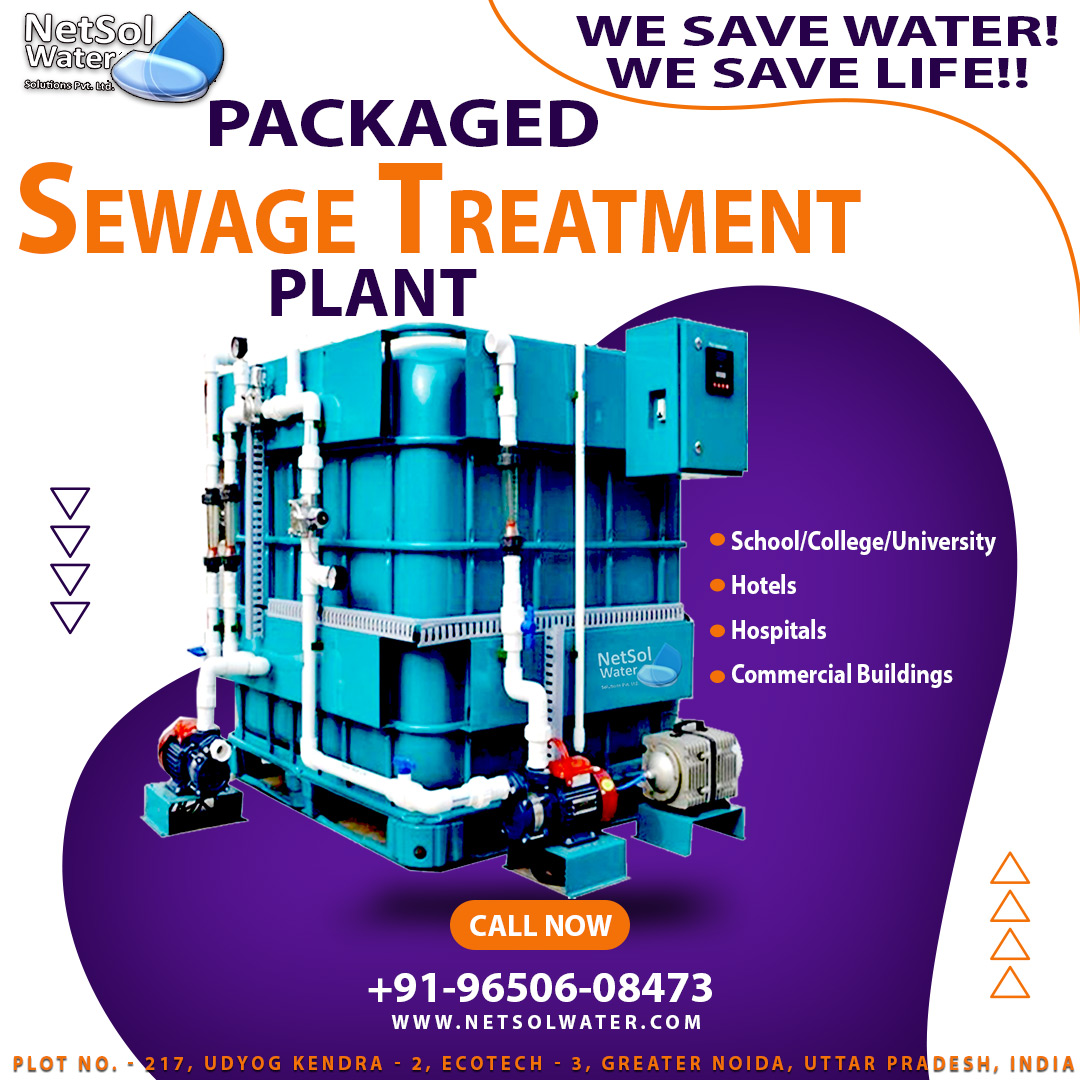What are the benefits of Netsol sewage treatment plants?
Sewage is a mixture of water and waste that contains organic and inorganic materials from a variety of sources, including commercial, industrial, and residential facilities. As a result, wastewater treatment is essential.
Yes, the sewage treatment plant (STP) is responsible for removing dangerous toxins in the most cost-effective manner while also providing a better environment.
5 major benefits of Netsol sewage treatment plants (STP’s) are as follows:
1. STP is a tried-and-true technology that delivers consistent results at all times.
2. Sewage treatment plants help to protect the environment from contamination.
3. STP meets the government's pollution emission regulations and avoids hefty fines.
4. Plant installation is simple and easy, with minimal operating and maintenance costs.
5. Sewage treatment plant installation lowers the risk to public health and the environment.
Netsol Sewage Treatment applications-
1: Residential houses,
2: Commercial buildings,
3: Industrial facilities, and
4: Wastewater from municipalities, and so on.
How does Netsol Sewage Treatment work?
• When wastewater arrives at a sewage treatment plant, it is filtered as part of the pre-treatment process. The wastewater here passes via screens and into settling basins, which can handle considerable amounts of material.
• As previously said, it functions as a pre-therapy because it occurs before three more aggressive rounds of treatment: primary, secondary, and tertiary treatment.
A: Primary Treatment
The wastewater is pumped into the clarifiers during this step. In the settlement basins, the wastewater moves slowly. The design of these tanks causes settling, in which biological solid matter accumulates at the bottom of the tank and lighter matter floats to the top, making cleanup easier.
A primary sludge blanket is the organic waste that accumulates at the bottom of the pond. The sludge that has settled in the clarity tanks is moved into aeration basins after a few hours to undergo another procedure known as the activated sludge treatment.
B: Secondary Treatment
Aerobic aeration is used in this therapy phase. Aerators, which have a system of pipes or tubes connecting to them, are found in aeration basins. When air passes through the aerators, the small holes transform into bubbles, which are then mixed with the water column. The bacteria consume the organic debris as a result of the oxygen-bacteria interaction, which gives wastewater its distinct appearance and smell.
After aeration, the wastewater flows into the secondary clarifying basins, which are the following tanks. The bacteria settles in the bottom of this for a day or two, forming a sludge blanket that the water treatment plant may then pump away.
The sludge blanket becomes return activated sludge after it has settled entirely (RAS). The bacteria in the RAS, return to the primary clarifying tank, where they aid in the breakdown of any organic matter in the sewage.
RAS is converted to waste-activated sludge after it has constantly passed through both the primary and secondary clarifying basins, i.e. multiple times (WAS). The WAS then flows to the aerobic sludge digesters, which are covered tanks. The bacteria in these tanks do not digest the organic content in the wastewater, but the activated sludge begins to digest itself, causing the majority of the sludge to vanish. Finally, the leftover sludge is transported to a dewatering facility, which includes dewatering tanks where belt presses are used to compress any remaining water from the sludge.
C: Tertiary Treatment
Secondary and primary procedures are combined in tertiary treatment, which also includes mechanical and photochemical processes. This is a more sophisticated treatment that comes in handy when dealing with sanitary sewage that contains microorganism pollutants that need to be cleansed.
During this stage of the treatment, wastewater is routed through sand filters, which filter out very small particles. After that, the water goes through a photochemical process in which it passes through ultraviolet (UV) rays, which kills any bacteria and viruses as well as removes any illnesses.
As a result, once the wastewater in the sewage water treatment plant has gone through the three phases listed above, it is totally safe to discharge as effluent into the environment.
Conclusion
Due to the general benefits of sewage treatment plants, STPs have emerged as the best and highest-rated technology for wastewater treatment, helping to protect the environment and increase safety.
For many sectors in India, we are professionals in producing and supplying efficient and cost-effective sewage treatment plants. We have a skilled staff that is constantly working to enhance STP design for a healthier environment, and as a result, we have been acknowledged as exceptional designers, manufacturers, and suppliers of sewage treatment plants that are more beneficial.




